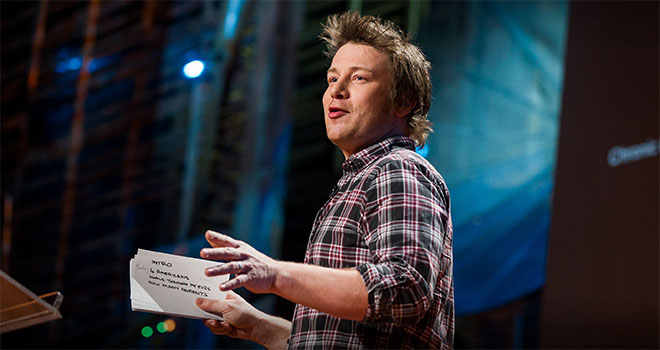How to Write a Speech to Engage your Audience
Updated February 19, 2021 - Dom Barnard
In order to write a speech, you need to think about your audience, the required length, and the purpose or topic. This is true whether you are writing a wedding speech, conference presentation, investor pitch, or any other type of speech.
Being a great speech writer can help you get a promotion, motivate people, sell a business idea, persuade others and much more – it’s an essential skill in the modern world. In this article, we cover key tips for writing a speech.
Initial planning - Why? Who? What?
You should invest time strategically considering the speech. This will help you decide on the key message and content about your topic. Here are some points to consider.
Why?
- What do I want to achieve?
- When I achieve this, what will that do for me?
- Why am I speaking?
- What is the purpose of this speech?
Who?
- Who are the audience and who do they represent?
- Who do I represent?
- What do I know about them? (culture, language, level of expertise)
- How much influence do they have?
What?
- What is the main message and key points?
- What specific action is implied?
- What level of information should I include?
- What is important to them?
Popular speech structure
You need to catch the audience attention early, very early (see section below). Deliver a memorable beginning, a clear middle and structured ending.
Popular speech structure:
Opening
Main Point
- Explanation 1
- Explanation 2
- Explanation 3
Secondary Point (Optional: supports main)
- Explanation 1
- Explanation 2
- Explanation 3
Tertiary Point (Optional: supports secondary and main)
- Explanation 1
- Explanation 2
- Explanation 3
Closing
Attention span of your audience
Research shows that attention span is greatest at the beginning of a speech, reduces considerably during the middle of your speech and picks up again towards the end when your audience know you about to finish.
Don't try to put too many ideas into your speech. Research shows that people remember very little from speeches, so just give them one or two ideas to hang onto.

These two articles explain audience attention span in more detail, and how to write a speech to extend it:
Speech introduction
Make sure your opening few seconds are memorable as this is when your audience will make up their minds about you. Use a bold sentence to grab their attention, works best with numbers reinforcing your point.
An example sentence might be – "After this speech, I’m confident 50% of you will go out and buy a VR headset." Follow these tips on how to write a speech intro:
Remember the INTRO model
This is more focused on presentations but sections can be applied broadly to other general speeches.
1. Interest
You: Introduce yourself confidently and clearly
Audience: Why should I listen to you?
2. Needs
You: Remind the audience the reasons for this speech
Audience: What’s in it for me?
3. Timing
You: State length of speech at beginning, “Over the next 15 minutes”
Audience: How long until I can get a coffee?
4. Routemap
You: State the main points, “Today I’m going to cover 4 main points”
Audience: Which sections of the speech are important to me?
5. Objectives
You: Clearly state the objective, “By the end of this speech, I would like to…”
Audience: So that’s what you want from me today…
Example: Great speech opening
This speech opening is by Jamie Oliver, giving a TED talk on teaching every child about food.
Sadly, in the next 18 minutes when I do our chat, four Americans that are alive will be dead through the food that they eat.
My name’s Jamie Oliver. I’m 34 years old. I’m from Essex in England and for the last seven years I’ve worked fairly tirelessly to save lives in my own way. I’m not a doctor; I’m a chef, I don’t have expensive equipment or medicine. I use information, education.
I profoundly believe that the power of food has a primal place in our homes that binds us to the best bits of life. We have an awful, awful reality right now. America, you’re at the top of your game. This is one of the most unhealthy countries in the world.

How not to open your speech
Avoid the following opening comments:
- "Apologies, I’m a little nervous about speaking" – no need to make the audience aware of this, it will make them focus on how nervous you are instead of what you are saying
- "I’ve got the graveyard shift" – you are telling people not to expect much
- "I’m what stands between you and lunch" – even if people weren’t thinking it, after this comment, all they are thinking of is when will you finish so they can eat
- "We are running late, so I’ll do my best to explain..." – instead of this, state how long your speech will take so that people know when they will be leaving
Middle of the speech
The body of your speech is where the majority of the information is. The audience has been introduced to the subject and reasons for the speech. Now you need to present your arguments and examples, data, illustrations backing up your key message.
How to write a speech body can be difficult, the best way to build this section is to write down three points you are trying to convey in your speech, your main, secondary and tertiary points. Then write down three descriptions clarifying each of these points. The descriptions should be simple, memorable and meaningful.
The middle of your speech is where the audience start losing attention. Keep this in mind and ensure your message is clear. Use images, jokes and rhetoric questions to keep the audience engaged.
Don’t overwhelm your audience with many points. It is much more valuable to make a small number of points well, than to have too many points which aren’t made satisfactorily.

Obama and his speeches
Obama’s speeches are well prepared with a focus on powerful words “A change is brought about because ordinary people do extraordinary things“. His speeches use simple language and quotes from famous speeches his listeners can relate to.
For additional trademark Obama techniques, check out How Barack Obama prepares his speeches.
How to end a speech
Similar to the opening, your closing statements should be impactful, re-stating the key message of your speech. We advise learning your ending few lines word for word. The ending is an opportunity to:
- Leave the audience with a lasting impression of your speech
- Summarise the main points
- Provide further ideas and discussion points for the audience to take away with them
- Thank the audience for taking the time to listen
Methods to end your speech
Quotation Close – use a famous quote to get the audience’s attention and create a link to your speech.
Bookend Close – refer back to an opening statement and repeat it or add a few extra words to elaborate on it.
Open Question – ask the audience a provocative question or a call to action to perform some task on the back of your speech.
For additional tips on how to write a speech, in particular how to close your speech, read:
- 5 great ways to end a speech
- 10 ways to end your speech with a bang
- Presentations: language expert – signposting
Ideas for ending a speech
- Key message
- Refer to opening impact statement
- Tie up
- Objectives met
- Call to action
- Q&A
- End on an Up
- Thank You
Step-by-step process for writing a speech
Here's how to write your speech from concept to completion.
- Outline your speech's structure. What are the main ideas for each section?
- Write out the main ideas in your outline. Don't worry about making it perfect - just write as much of it down as you can
- Edit and polish what you've written until you have a good first draft of your speech
- Now you need to practice and memorize your speech. The more you practice, the more you'll figure out which sections need changing. You'll also get an idea of length and if you need to extend / shorten it.
- Update your speech, practice some more, and revise your speech until it has a great flow and you feel comfortable with it.
Classic speech transcripts
One of the best ways for learning how to write a speech is reading other well written ones. Here are a list of famous speeches to read and learn from:


